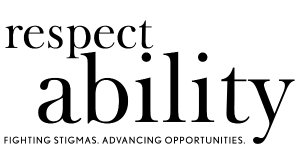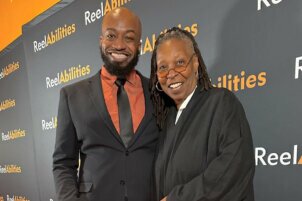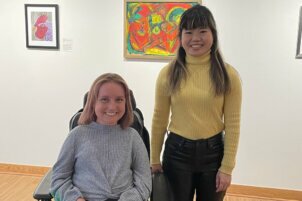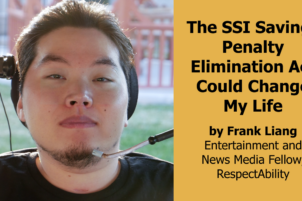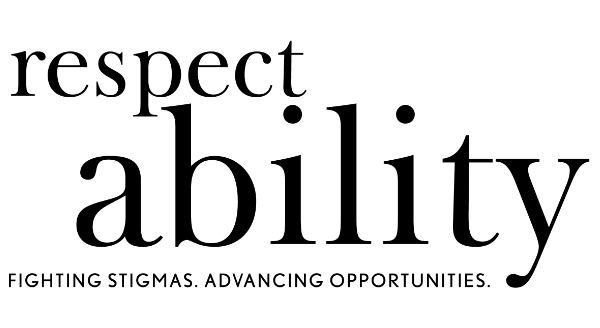“Over the last 20 to 30 years, things have changed significantly for people with disabilities, young people especially. They’re much more educated, they’re much more tech savvy, their expectations are very different from the previous generations.”
– Michael Reardon, Office of Disability Employment Policy’s Supervisory Policy Advisor
Washington, D.C., August 30 – During a day-long summit held on Capitol Hill, policymakers explored how current policies affect access to employment for people with disabilities.
The “Public Policy and Jobs for People with Disabilities” discussion featured: Mary Lazare, Principal Deputy Administrator, U.S. Department of Health and Human Services for Aging, Administration for Community Living (ACL); Rachel Stephens, Program Director of NGA (National Governors Association) Economic Opportunity; Michael Reardon, Office of Disability Employment Policy’s Supervisory Policy Advisor, Employment-Related Support Policy leading the SEED (State Exchange on Employment & Disability) initiative; and Tina Williams, Deputy Director, Office of Federal Contracting and Compliance programs (OFCCP). RespectAbility’s Policy and Practices Director Philip Kahn-Pauli served as moderator.
A Focus on WIOA
The panel highlighted the impact of the Workforce Innovation of Opportunity Act (WIOA), which last year added 100,000 new jobs to the market that enabled people with disabilities to enter the workforce. Noting such a change, Kahn-Pauli asked the panelists how these changes are creating more pathways for the workforce and what else needs to be done for continued progress.
As a result of WIOA, Lazare said three programs moved to the Administration for Community Living (ACL): Assistive Technology (AT) programs, Independent Living programs and the National Institute on Disability, Independent Living and Rehabilitation (NIDILRR).
Managing these programs created the opportunity for her agency to be even more inclusive, she said. For example, WIOA provides assistive technology for people with disabilities, which helps them to live fully independently and helps them take greater advantage of work opportunities.
Lazare clarified that the AT Program does everything from demonstrating and refurbishing assistive technology to providing loans to people so they can afford it. And the Independent Living Program helps youth transition from education to work and from institutions into the community. She said that ACL is helping transition people with disabilities from vocational rehabilitation to integrated competitive work opportunities.
According to Reardon, WIOA accomplished two significant things. First, it confirmed that people with disabilities are legitimate consumers of the Department of Labor’s supportive services. That required making the 2,000 American Job Centers (AJC) across the country both programmatically and physically accessible to people with disabilities. The second major impact was updating the law to better approximate reality. So, for the first time, it focused on transition services for youth to go from school to employment, which meant involving the Department of Labor, not just the Department of Education.
WIOA aimed to limit the use of sub-minimum wage for people with disabilities and help them find competitive integrative employment. Reardon noted that many policymakers aren’t aware of the significant changes affecting people with disabilities, especially young people.
Stephens added that WIOA enabled her organization to provide technical assistance to governors, state agency staff and to WIOA’s State Workforce Boards. WIOA’s State Workforce Boards are comprised of industry representatives as well as people from workforce, labor and other education agencies. Additionally, state labor departments now offer vocational rehabilitation services as a result of this act.
Since WIOA, numerous legislation and executive orders have taken place, such as improving coordination for transition services as well as employment support services, Stephens said. Many states are looking closely at their own employment practices as well. She called Maryland a model state, largely due to devoting a cabinet position to disability issues. The cabinet‑level position on disabilities has elevated the issue in other policy areas and helped foster coordination with other agencies, she said. This position was created by former Governor Robert Ehrlich and has been supported across party lines.
The Impact of Interagency Processes
Principal Deputy Administrator Lazare also spoke about the critical behind-the-scenes, interagency work she is coordinating within the federal government to promote more jobs for Americans with disabilities. As reported by the Government Accountability Office in 2012, there are more than 45 different federal programs working on employment opportunities for people with disabilities. However, as shared by Kahn-Pauli, many of these programs are disconnected, uncoordinated and duplicative efforts. In response, Mary Lazare and her team at HHS, have launched a Multi-Agency Task Force on Improving Employment for People with Disabilities. This Task Force, recently mentioned in the White House’s announcement marking the 29th Anniversary of the ADA, has a broad goal of reforming “training and workforce development programs”, “better enabling Americans with disabilities to develop in-demand skills for a wide range of industries” and “supporting research to develop new technologies that will increase access and quality of life for Americans with disabilities.”
Task Force participants include agency representatives from across HHS, the Department of Labor, the Department of Veterans Affairs, the Small Business Administration and other key executive branch departments.
Best Practices for Inclusive Employment Practices
This panel also explored how states are modeling inclusive employment practices. States are examining their own hiring practices, employment policies and civil service examination policies to ensure that people with different types of abilities can participate at every step of that process.
Williams cited the example of Wisconsin’s Project Search program and noted a family-owned manufacturing company that employs people with disabilities. This company has found that individuals with different abilities make them uniquely gifted and better suited to certain tasks than other workers.
Fighting Stigmas
The panel was one of several during RespectAbility’s annual Capitol Hill summit at the Rayburn House Office Building. More than 100 people, including federal employees, disability rights advocates and entertainment professionals attended.
Among the questions asked of the panelists was one posed by Aaron Kaufman, senior legislative associate with the Jewish Federations of North America. Kaufman asked how agencies are working to counter the stigma around hiring people with disabilities.
Lazare responded that a critical mass of people with disabilities in the workforce can demonstrate success and help create a cultural shift. Lazare also lauded RespectAbility’s work with media to help create a culture shift as being critical in creating this shift.
Williams noted the importance of identifying strong champions, elevating them and giving them the opportunity to share their success stories.
“I do have a disability, but it doesn’t define me,” she said. “I don’t think people sit around and say, this is the most forefront thing that I want you to know about me. When they come to the workforce and they apply, including me, that’s not something that they bring to the table. They bring their skill set to the table, their education, their qualifications. They are there based on their merit.”
This powerful discussion and exploration of the policies related to access to employment concluded with the call for a cultural shift to bring more people with disabilities into the workforce. This cultural shift and change will require everyone in the community, not just one agency or entity or a certain group of people.
“It will require not only federal agencies, state and federal law makers and policy makers, it’s also going to require the efforts of everybody in this room and everybody that I talk to about this topic,” Williams said. “It’s going to require all of us to work together to make a change.”
